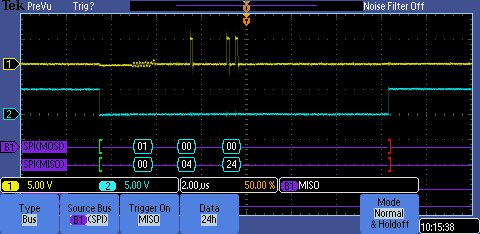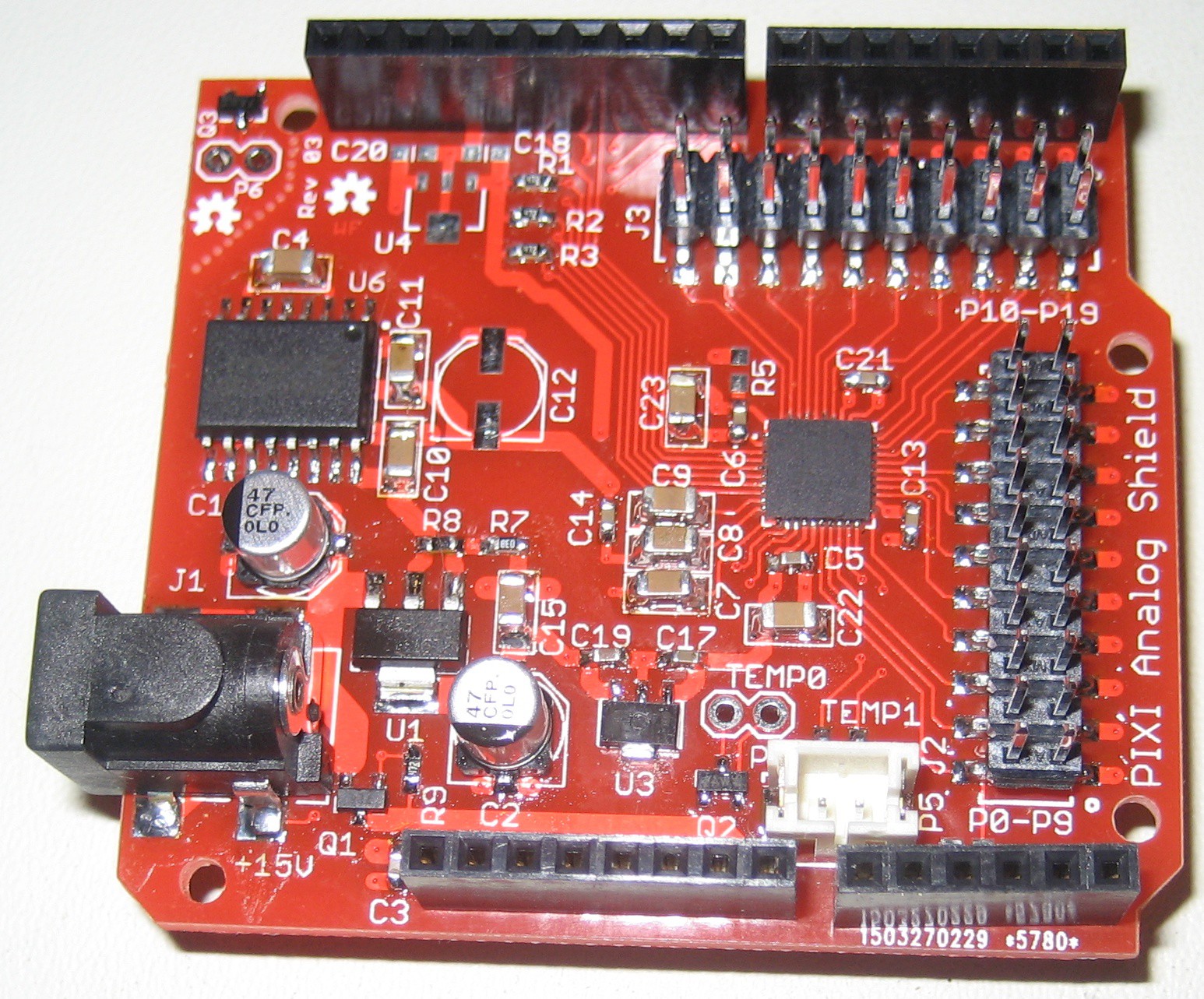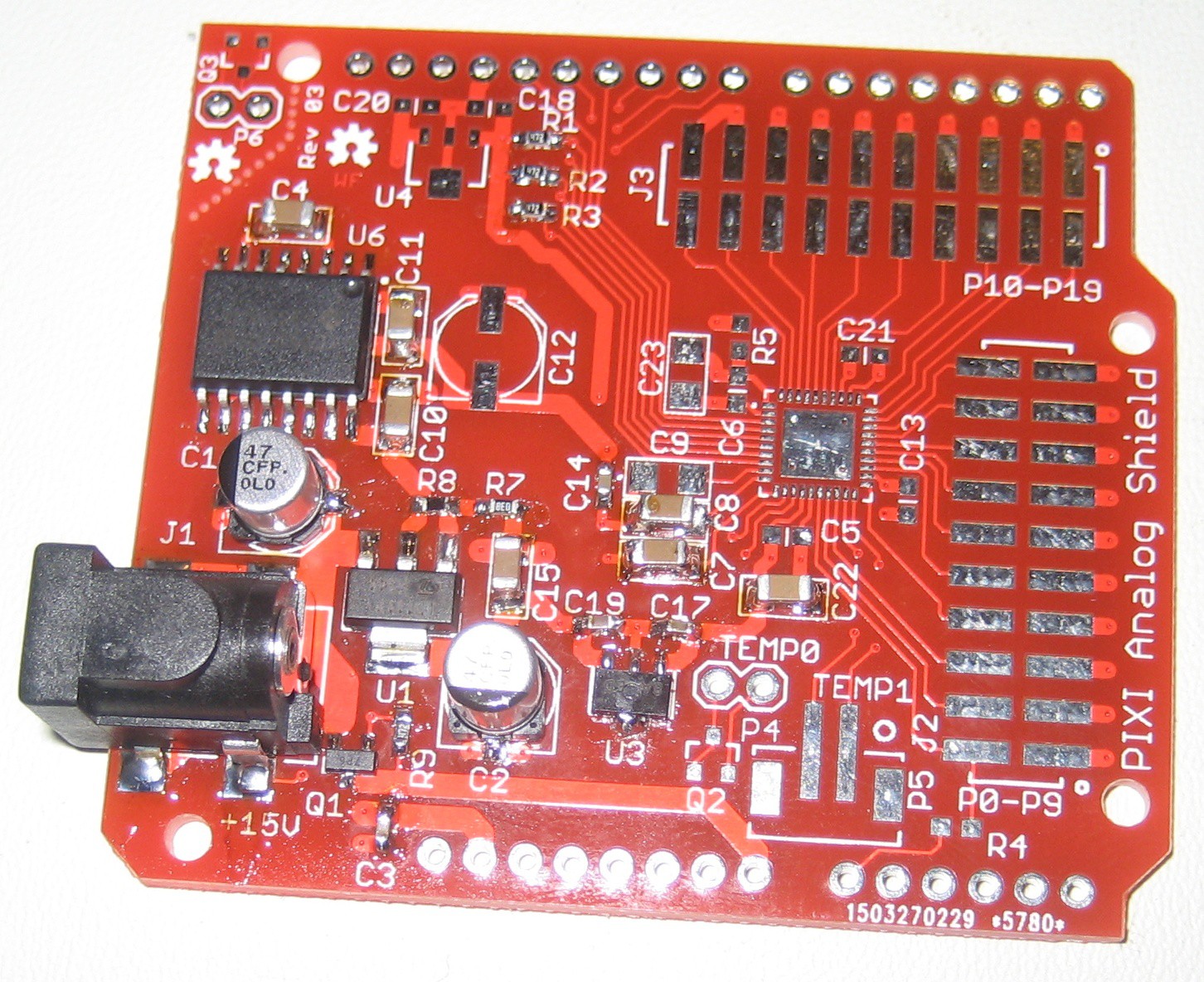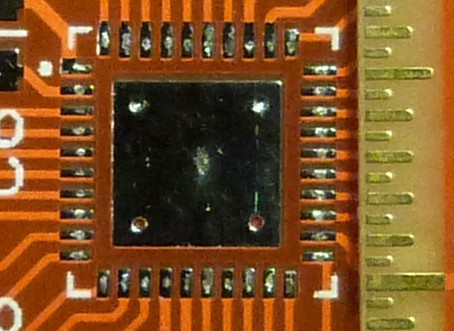The initial board design was made in KiCAD, in the spirit of designing open source hardware with open source CAD tools. PCBs were build by OSHPark in their excellent quality.
I have 3 working prototype boards available, hand populated by me.
ADC input voltage ranges
- 0V to +10V
- 0V to +2.5V
DAC output voltage ranges
- 0V to +10V
GPIO voltage
- 0V to +5V input range for GPI
- 0V to +10V output range for GPO
SPI interface using the VIO voltage from Arduino connectors (5V and 3.3V compatible, sped'ed down to 1.8V). A separate VIO regulator may be populated for standalone operation with SPI wired to a different master board like a RPI or BBB.
15V input voltage required.
The 'external' temperature sensor can snap off easily through a series of drill holes. This makes the sensor truly external and also exposes the Arduino RESET button for easy access.
Unfortunately, the Maxim chip is still not available in quantities through the regular channels. But it got featured again in Maxim's latest newsletter, so there is hope. In the meantime my 5 engineering samples are 'my precious'.
[26. Feb 2015] Things have change on the component side. Digikey and Mouser show stock of the MAXIM MAX11300 in the QFN-40 package that I used. Might be time to clean up the design and pursue a small quantity build.
Use cases for this could be monitoring multiple analog signals, driving multiple analog outputs, voltage conversion of signals, controlling brightness of up to 20 strings 3-4 LEDs each (with 25mA current). The ultimate goal will be a 20 channel voltage monitor with data capture to a PC and visualization. And I am going to attempt to build a digital Hassler Circuit. I know Bob Widlar will spin in his grave, but as long as the spining is not done by a stepper motor, he might be OK.
Currently I am working on a new revision of the board (done in Eagle CAD) to clean up the wrong footprints and change the regulator for the negative rail, to enable all IO voltage ranges. Design files will be published once the board is tested and error free.
 MagicWolfi
MagicWolfi








Hi! Great job! Is there a possibility to set range on all DACs 0-5V or 0-3.3V ?